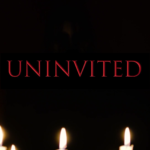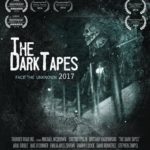Review by Chris Rennirt
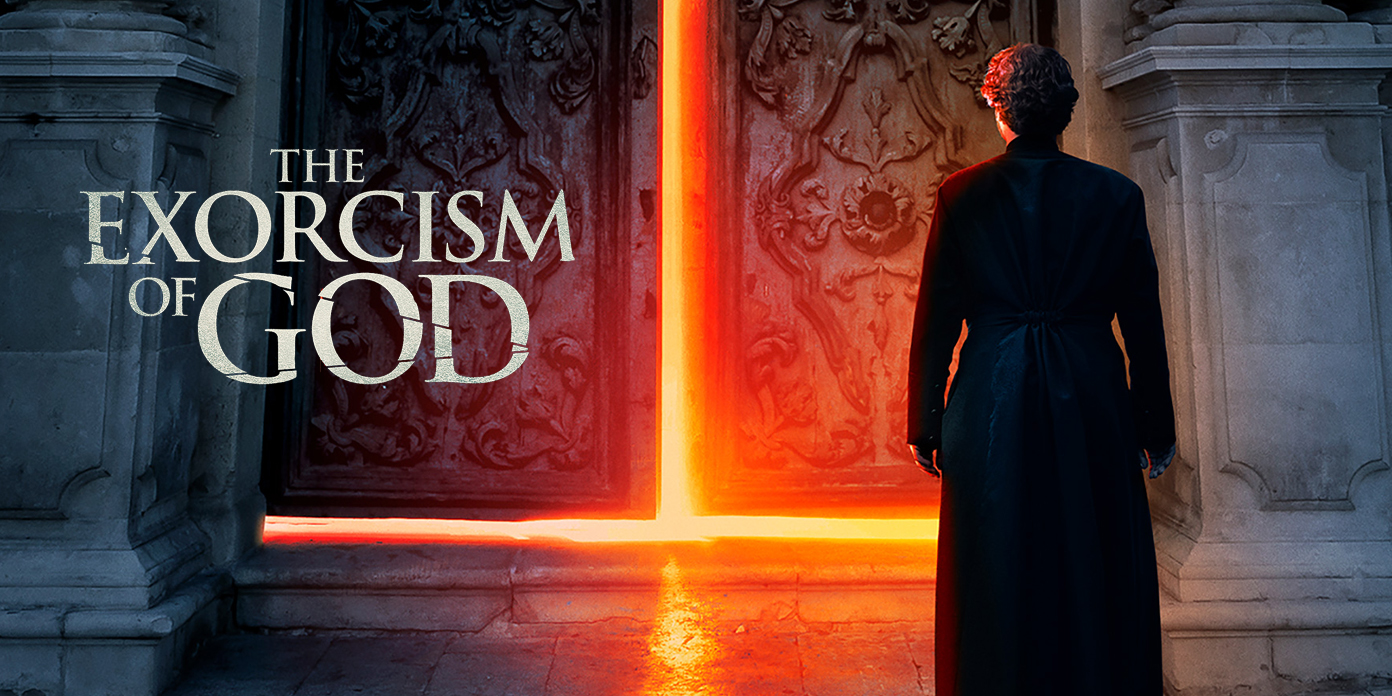
The Exorcism of God? Yes! My first thought about this movie was exactly that question. Is this really a movie about exorcising God from the body of a human…and not the typical exorcism of a demon or, perhaps, The Devil himself? The answer to that question is exactly what makes this new horror film, from writer/director Alejandro Hidalgo (The House at the End of Time, Eva) and cowriter Santiago Fernández Calvete, one well worth watching. Too often, such films about demonic possession repeat the same tired, predictable things we’ve seen too many times, with nothing new. Just when you think The Exorcism of God will do that, it doesn’t. Just when you think you’ve seen it all, you haven’t. Finally, thanks to Hidalgo and Calvette, the genre of religious horror has a new and terrifying twist–a story straight from Hell, not told before!
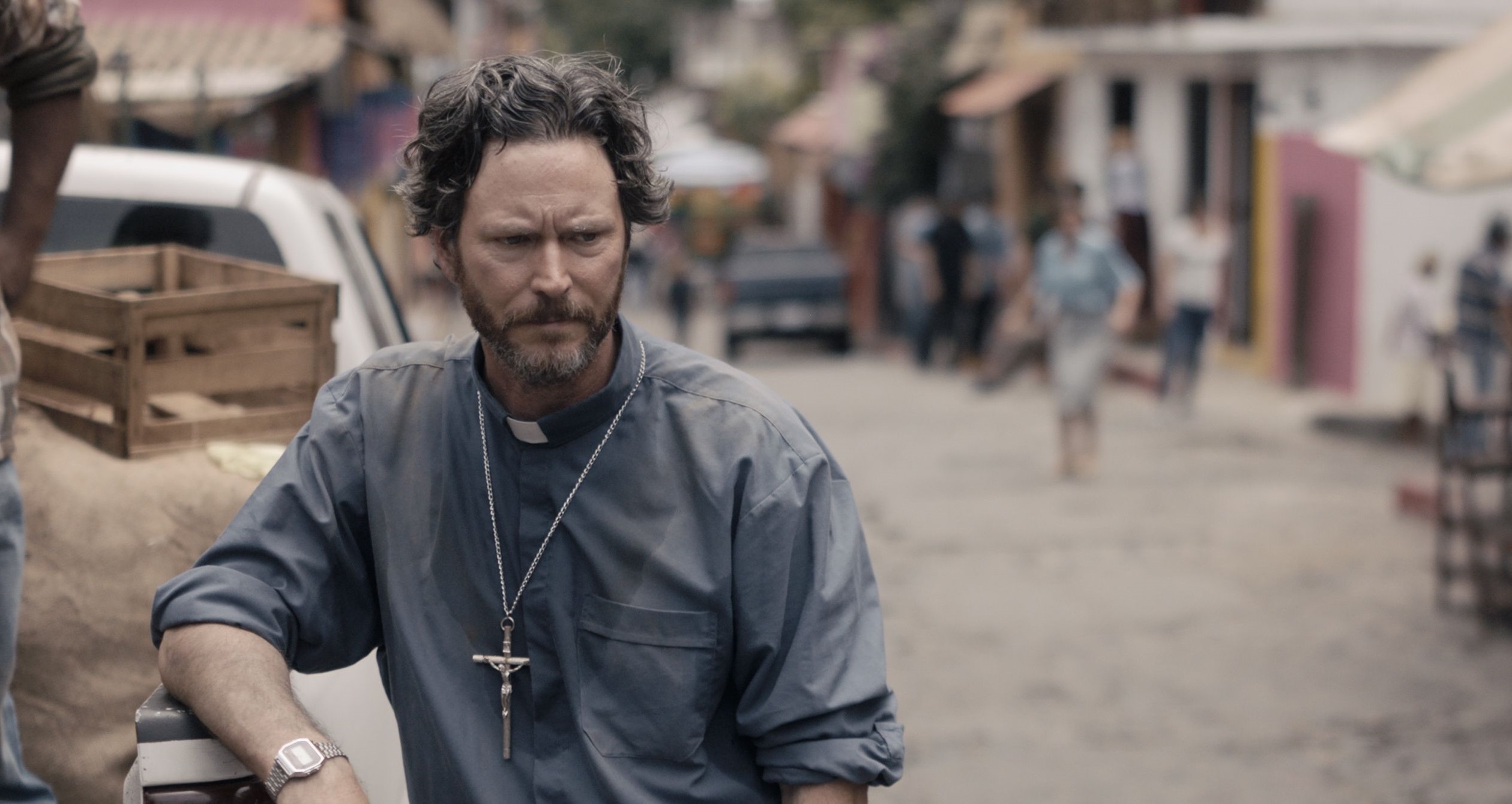
Father Peter (Will Beinbrink) is a man haunted, if not possessed, by his own demons…and more!
The Exorcism of God (hereafter referred to as TEOG) begins with Father Peter (Will Beinbrink) defying orders from his superior, Father Michael (Joseph Marcell) to begin an exorcism that will follow anything but the story from the playbook it suggests. As the director’s personal homage to perhaps the greatest exorcism movie of all time, The Exorcist, it’s as if Father Marin has arrived again, in another movie. Yes! William Friedkin and William Peter Blatty might even enjoy seeing this.
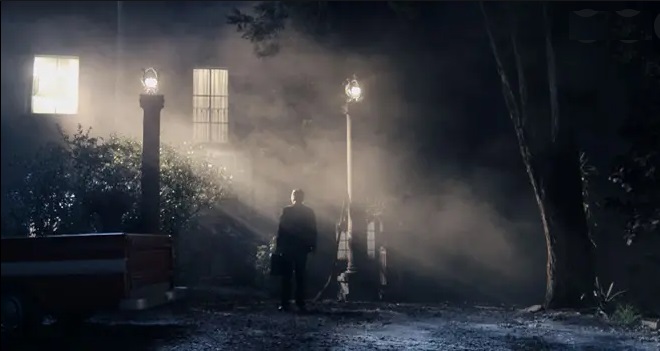
Father Peter (Will Beinbrink) arriving at the scene of his first exorcism–perhaps the best homage to The Exorcist in movie history.
From Father Peter’s opening exorcism begins a haunting secret of forbidden desire and satanic sexuality. Revealing his sin, although he is driven to do so for penance, will bring an end, most surely, to the saintly work he’s done for years since, for countless people. Yes! Perhaps, his sins are better off kept secret for the good of the children. Perhaps. But, since this is horror, don’t be so sure!

Maria Gabriella de Faría
Powerful performances by all involved elevate TEOG far above where it might have been otherwise. Especially outstanding is Venezuelan singer and actress Maria Gabriella de Faría in her role as the lead embodiment of demonic power and hell-born damnation, Esperanza. I’ve not seen Maria before on screen. But, she’s top tier in TEOG’s acting credits, easily, even though she’s meant to be more of a supporting actress than one who steals the show. Here, expressions, body language, tone of voice, and sensuality (as if supercharged, on steroids) are all translated, masterfully, to demonic hellishness, with Maria making humanness a “demoness,” perfectly. Her portrayal is one, suddenly, for the first time, experiencing the feelings of human, post-pubescent sexuality and energy, channeled through the power of Satan, into a monster worthy of new infamy in the genre. Maria says (in the bluray’s behind-the-scenes featurette) that she acted with such energy and force that her vision actually “went black” each time, requiring a moment to recover and regain her sight. (Wow! How many actors do you know that experience temporary blindness from acting so hard?) And yes! The fuck-me look on Maria’s face, as she spews menstrual blood in front of Father Peter, is an eerily-erotic guilty pleasure, well worthy of a rewind…or two, or three! Internet research (on Wikipedia) reveals that the 29-year-old Latina has appeared in “television series across South America. She has [also] starred as Isabella ‘Isa’ Pasquali in Nickelodeon’s Grachi, and as Franky Andrade in Nickelodeon’s Yo so Franky.” More commendable is, therefore, Maria’s standout performance in a genre so unlike anything she’s done before. From a darling of Nickelodeon to a cursing, blood-spewing, whore from hell is quite a transition, quite impressive, and totally terrifying! Yes! Let’s rewind that one more time, please! Encore, Maria!
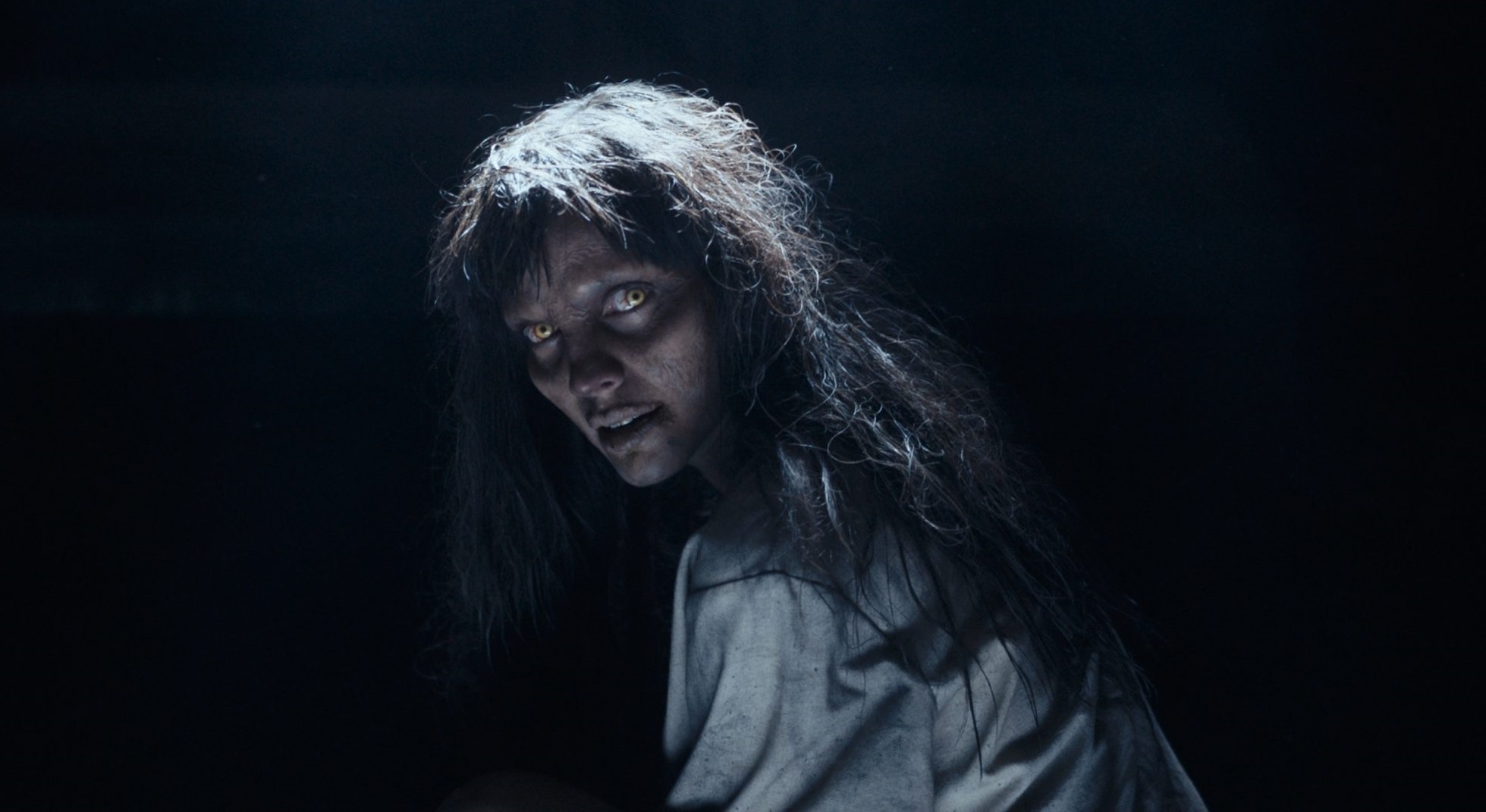
Maria Gabriella de Faría Chacón (as Esperanza), beautiful even in gorefully-awesome FX makeup!
Also powerful (and no less crucial) are the performances of Will Beinbrink (Father Peter), Irán Castillo (Magali), Joseph Marcell (Father Michael), and Hector Kotsifakis (Dr. Nelson). Joseph Marcell is a special treat here for his role in the 90s sitcom The Fresh Prince of Bel-Air (as Geoffrey Butler) as much as for his skill as an actor. In the bluray’s behind-the-scenes interview, director Alejandro Hidalgo actually talks about how Marcell was revered on the set by so many fans in the cast and crew. Of particular interest to everyone, he says, was Marcell’s special effects transformation to a younger Father Michael, making him actually look like his younger Geoffrey Butler character from Fresh Prince.
“I don’t know whether I should spray holy water or bleach.” ~ Father Michael
Even though Marcell says he’s never before acted in such a film, he delivers a most powerful and necessary performance in TEOG, as if he were a veteran of the genre. Marcell (as Father Michael) is a priest who is devoted to the faith, strong-willed and confident of his ability to expel demons, but also relaxed, real, and human enough to say “fuck” every now and then…especially when he’s dealing with demons trying to kill as much as possess him. Marcell’s ability to portray such balance, meshing opposing elements of character (with a bit of humor for good measure), is just what makes Father Michael so believable.
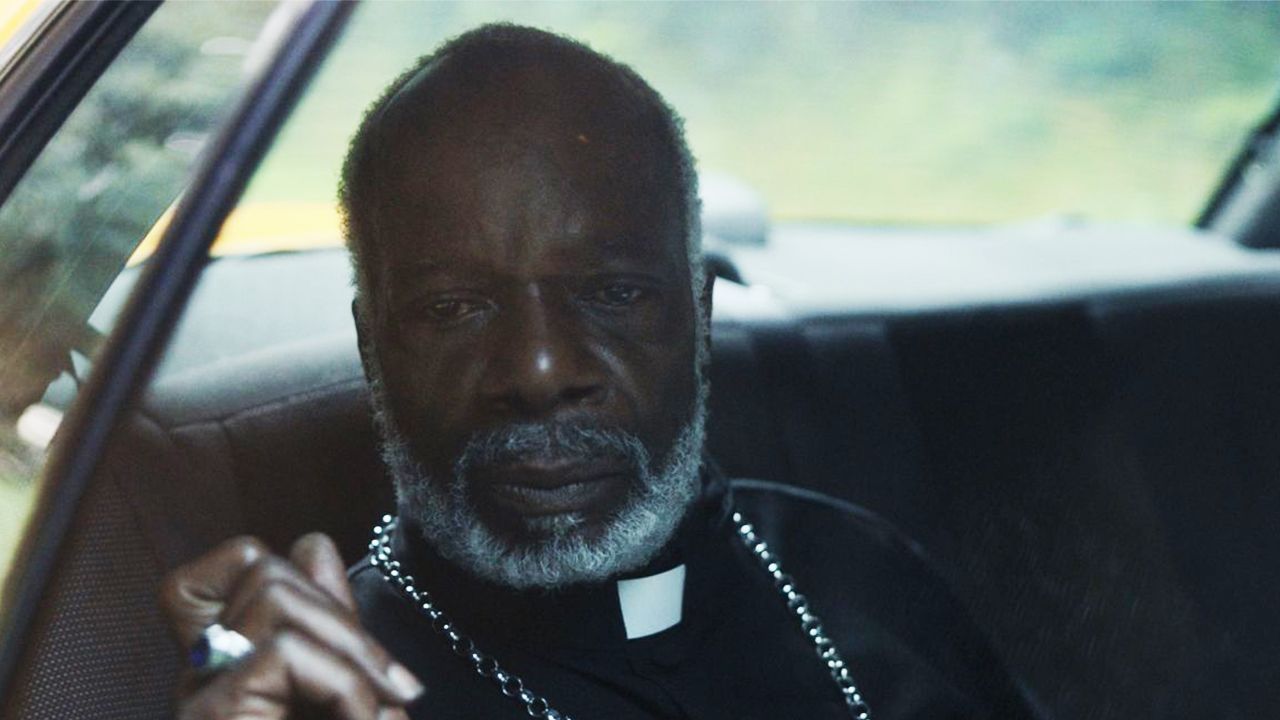
Joseph Marcell (as Father Michael) in The Exorcism of God
While some may criticize Will Beinbrink’s performance as being too often low key, I disagree. Beinbrink makes calmness a part of Father Peter’s personality, unless more is required of him. In scenes that need higher-key drama and emotion, he is on cue with it, every time, making the contrasts in Father Peter’s character all the more explosive and effective. For example, in scenes involving exorcism, Beinbrink leaves nothing to be desired; when Satan provides a reason, a fire and brimstone performance is served every time.
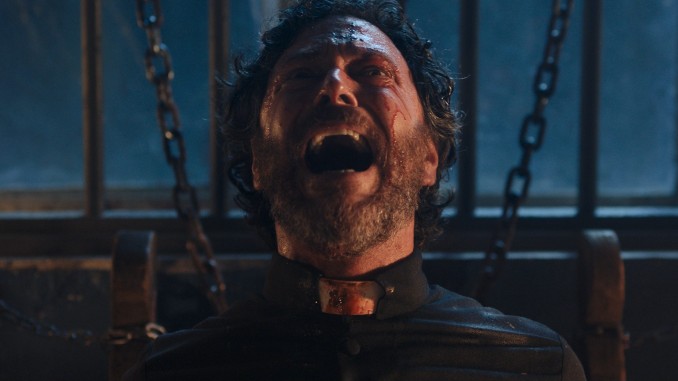
Will Beinbrink (as Father Peter) in a performance, strong enough to stir The Devil himself!
Mexican actress Irán Castillo (the star of many Latin American TV series) is another who performs an eye-popping contrast of performances. As the possessed Magali, in the opening exorcism, she is, possibly, more powerful (and truly frightening) than any actress in such a movie since The Exorcist (1981). Like Maria Gabriella de Faría (as Esperanza), Castillo shows us a demon exploring, like a baby, the physical feelings of its newfound humanness. Quickly, she matures to a breast-bearing demoness in heat, undulating in bed, ready for a quick orgasm. Better yet, it’s also utterly terrifying! Castillo’s performance is one to impress Satan himself. Like foreplay, it gets us ready for what’s to come; without it, The Exorcism of God could never be so satisfying. As the unpossessed Magali, Castillo does a skillful 180-degree feat of acting. She is, in fact, so good that, if not for the credits (and the special-effects makeup too, of course), I wouldn’t know that the two roles were played by the same person.
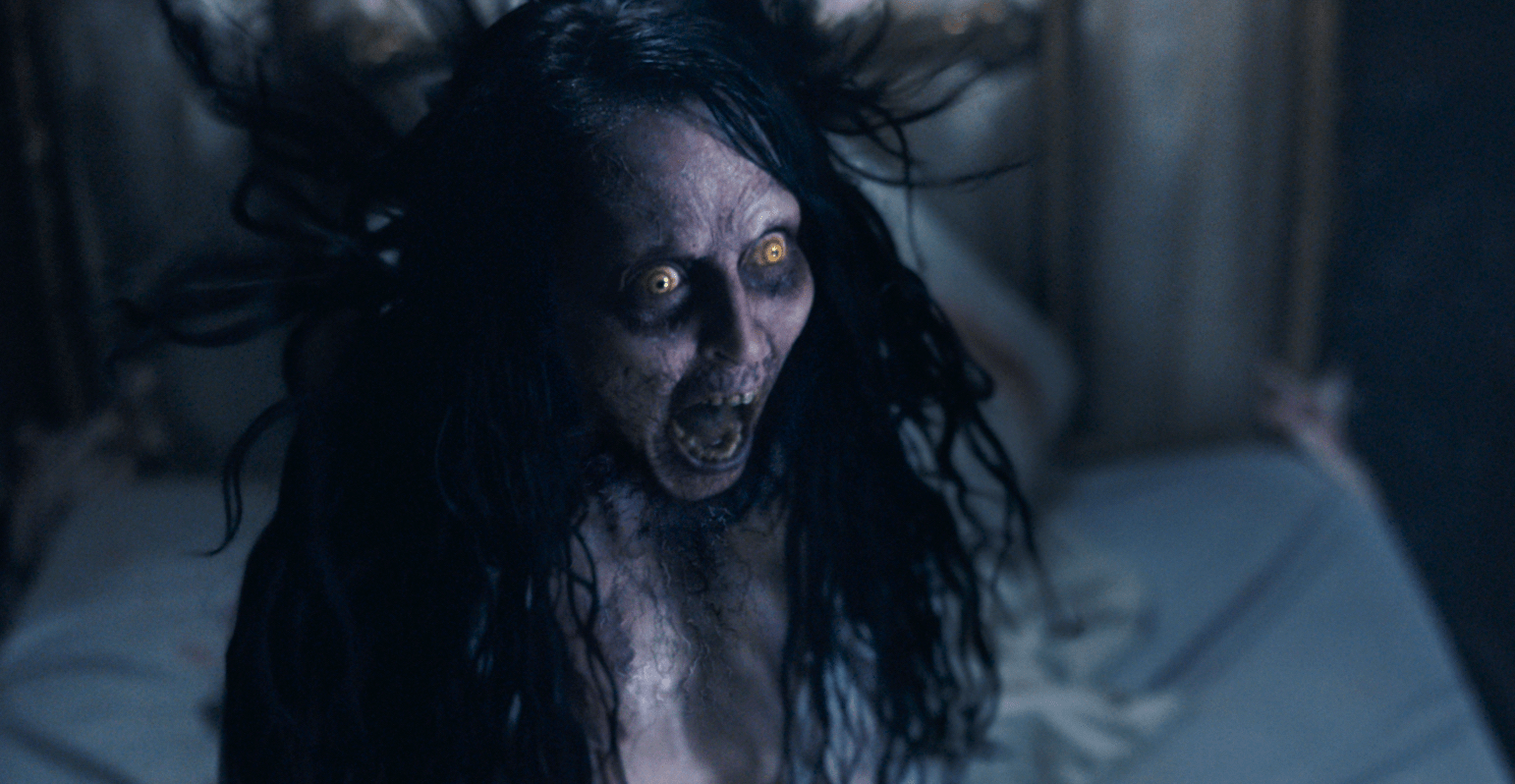
Irán Castillo, as a very possessed (and demonically-sensual) Magali
The settings in TEOG are atmospheric and authentic, because they are real, obviously so, and (and except for one I know of) not fabricated places, somewhere in a studio. Director Alejandro Hidalgo filmed the movie on location, in an isolated Mexican town. Adding further authenticity, he works with the local people (a detail also included in the bluray’s behind-the-scenes interview). With this, we get the priceless production value of ancient buildings, rural roads, centuries-old catacombs, and much more. The one set built for the movie (that I know of, from watching the behind-the-scenes featurette) is the prison. One look at its interior (a vision of Hell itself, with a huge iron door to contain its feature inmate), and you’ll suspect, although highly appreciate, its “fabrication.” While I doubt that small, third-world towns would invest so much to house their inmates, I highly appreciate the director’s imagination.
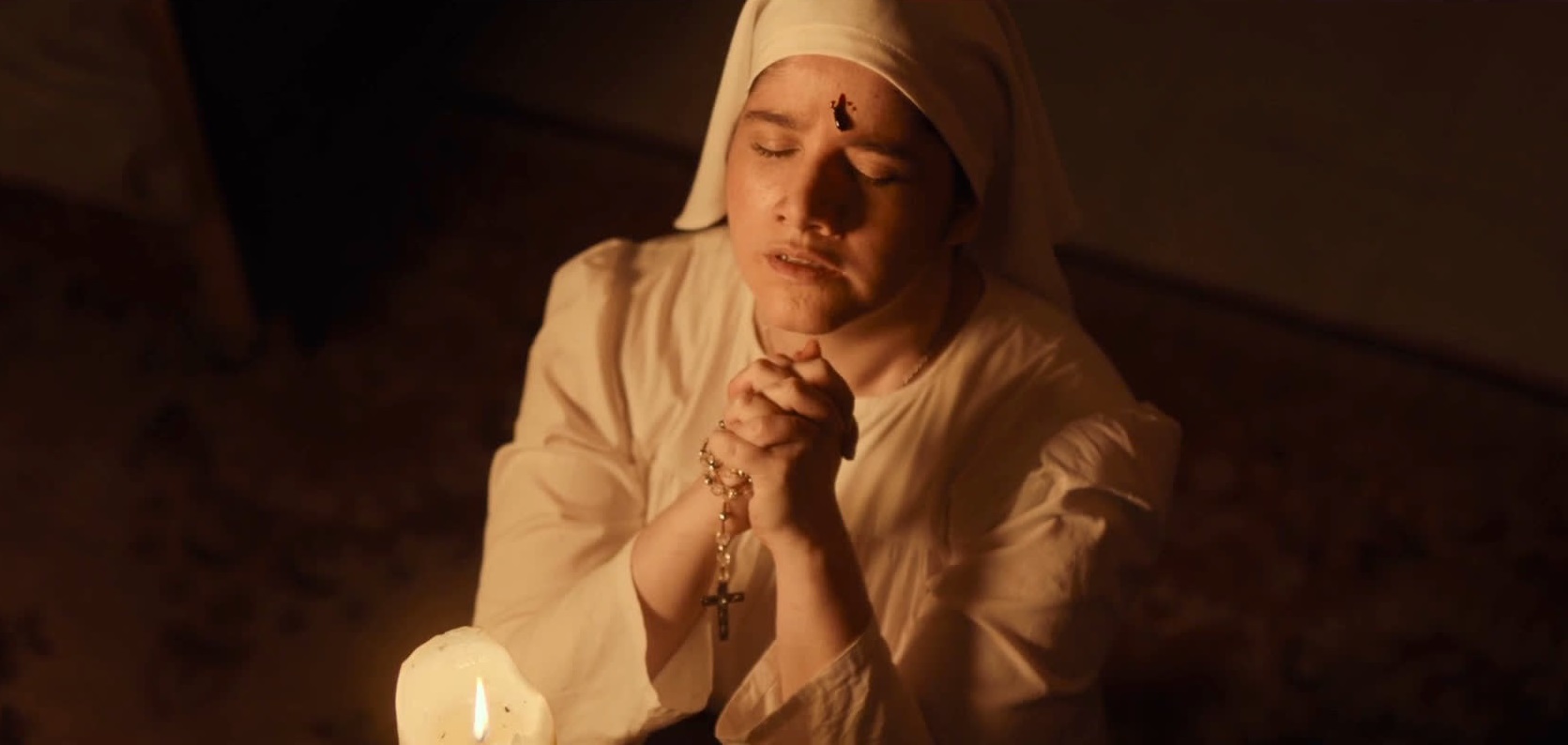
Blood on the forehead signals Hell ahead for this young nun (Eloísa Maturén).
One of the great bonuses of TEOG, is Hidalgo’s use of good old, practical special effects. With this, it has all of the best, realistic, gory qualities of another classic horror film from which it likely gains influence—The Evil Dead (Sam Raimi, 1981). As Hidalgo says, “I really prefer using practical effects and practical effects makeup…because it’s way scarier, because you can taste their reality, you can tell how real they are, you can see their expressions.” Yes! This is a director who knows what fans really want and knows how to do it right. That disgusting, black projectile vomit that hits Father Peter’s face (in another tribute to The Exorcist) is, indeed, disgusting, black, and really there…even if it isn’t really vomit. The bluray’s behind-the-scenes featurette, Deliver Us Towards Evil: The Making of the Exorcism of God (a must see, from which I have sourced all quotes from Hidalgo in this review) contains many additional, very interesting facts about the movie’s special effects. Don’t miss it!
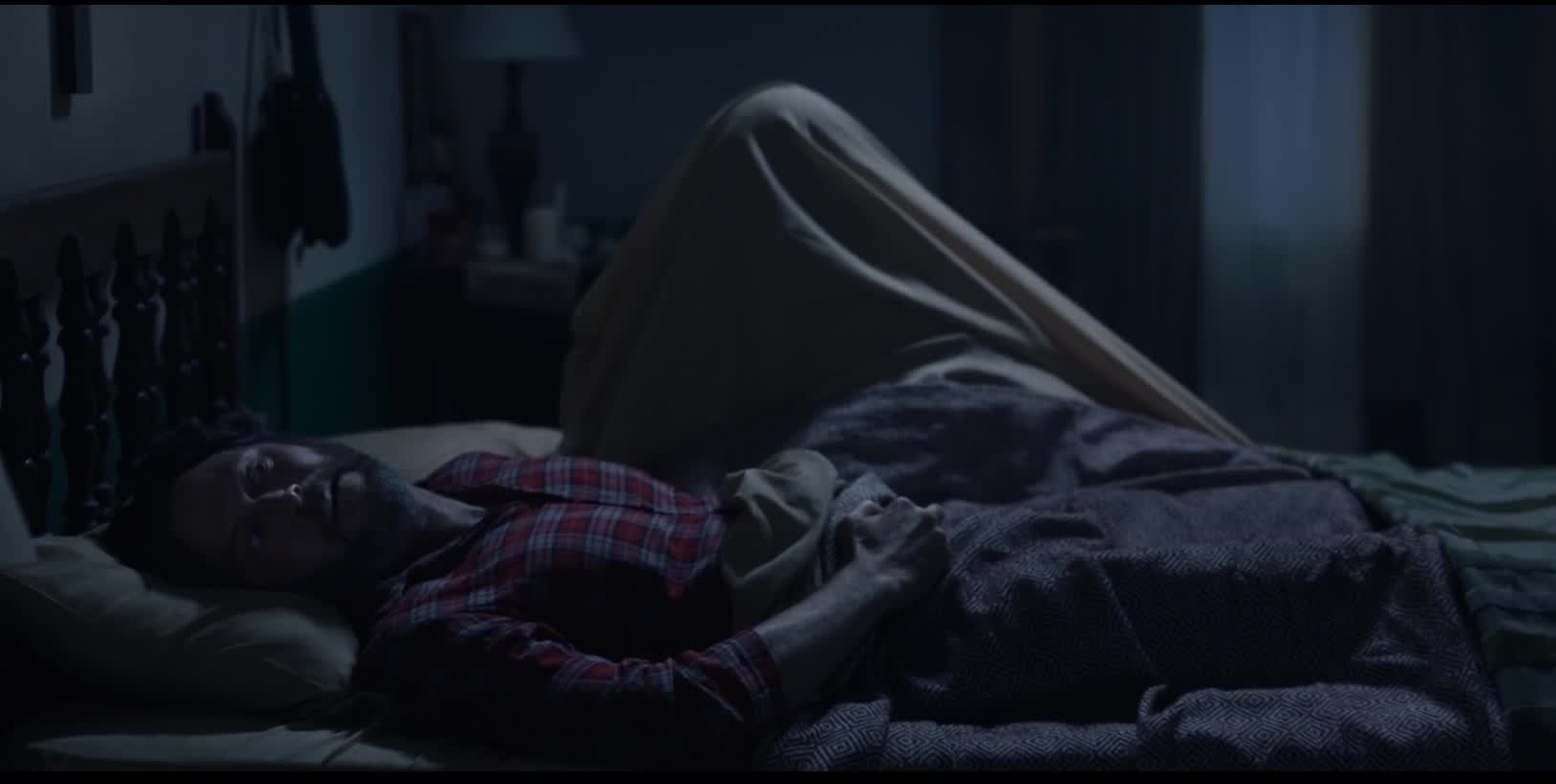
Let’s hope whoever (or whatever) is in the bed with Father Peter is happy to see him!
Related to the practical effects, I also liked how satanic manifestations of Jesus Christ and The Virgin Mary were caricatures, somewhat comic but grotesque, like Pennywise the clown. Rather than human, they are surreal, zombified representations, akin to, possibly, those in a movie that never was but could have been–Guillermo del Toro’s The Last Temptation of Christ Undead. In any case, the effect of Hidalgo’s vision here is powerful and terrifying, and far more effective than any, more familiar representations could have been. As he says, “I work with makeup artists to create characters that feel human, that feel perverse, diabolic, and terrifying.” As evidence of that in the film, Hidalgo’s Virgin Mary has a face of compassion, as she kills children! Hidalgo adds, “I tried to bring the most powerful horror conventions, but also by telling my own story by using my own personal fears.”

A caricature of The Virgin Mary is, ironically, more horrific than one possibly more familiar.
Another bonus that TEOG gives us is an ending that will be (for most viewers, I think) unpredictable—a double whammy twist, if not at least a single whammy. One potential whammy is thanks to a scene that was smartly deleted. (Watch the bluray’s deleted scenes and you’ll see.) With the scene included, it would have been a different, and definitely not-so-good, movie. The other surprise (and a surprise, I think, for all) is achieved with a most subtle but powerful, lingering visual effect. Here, ever more true is the the old saying invented by the advertising executive, Fred R. Barnard, in 1921: “One Look Is Worth a Thousand Words.” The saying, further attributed to an ancient Japanese philosopher, in TEOG suggests biblical Revelations…and yes, sequel, sequel, sequel!
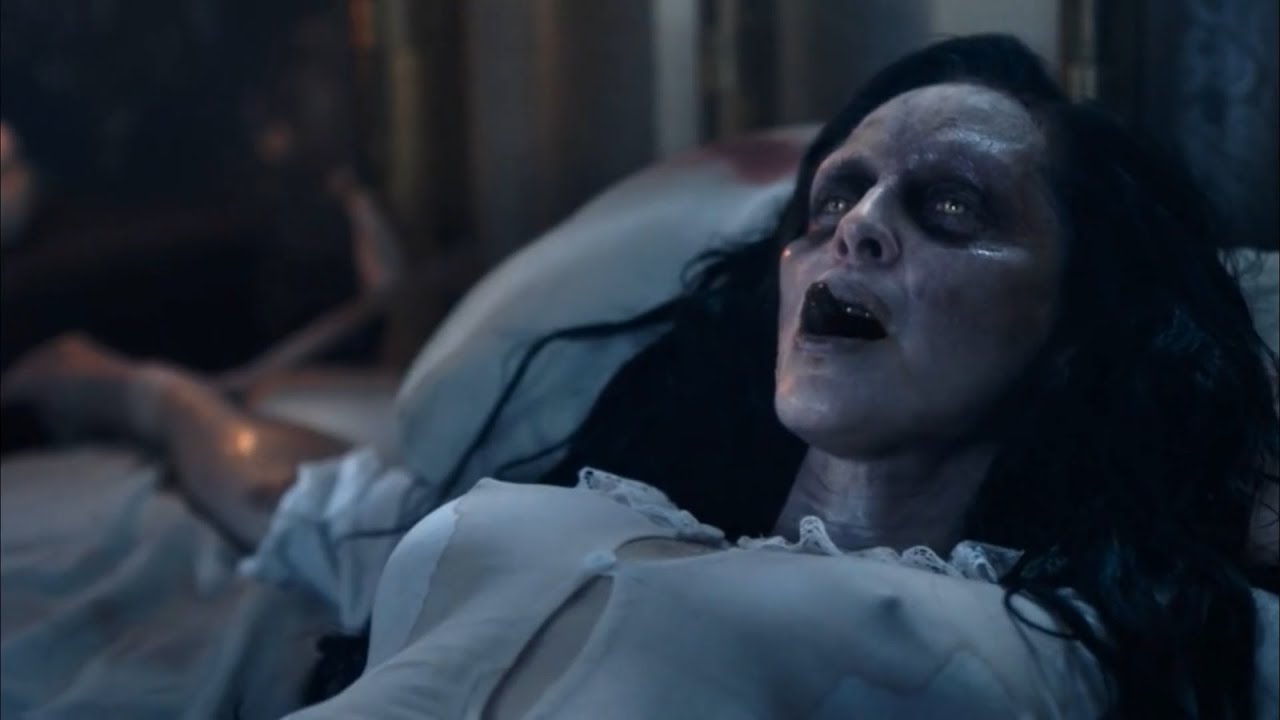
Magali’s blackened tongue licks her lustful lips, in a moment of devilish pleasure.
One of the movie’s weaknesses is also possibly one of its strengths, depending on how you look at it. What begins as a more serious movie about demonic possession, indeed like The Exorcist, turns into a movie more like The Evil Dead, with monsters that are more like undead zombies, albeit also possessed by Satan. With that, some may even call it uneven, not knowing what it truly wants to be. For me, perceivable unevenness is part of what makes it original, unpredictable, and possibly more appealing to viewers wanting more of both. Again, something about the unexpected cartoonish nature of Christ and The Virgin Mary also make them more nightmarish and frightening; with this, they are all the more horrifying being so different from anything we imagine for reality…and anything we expect, before they appear.
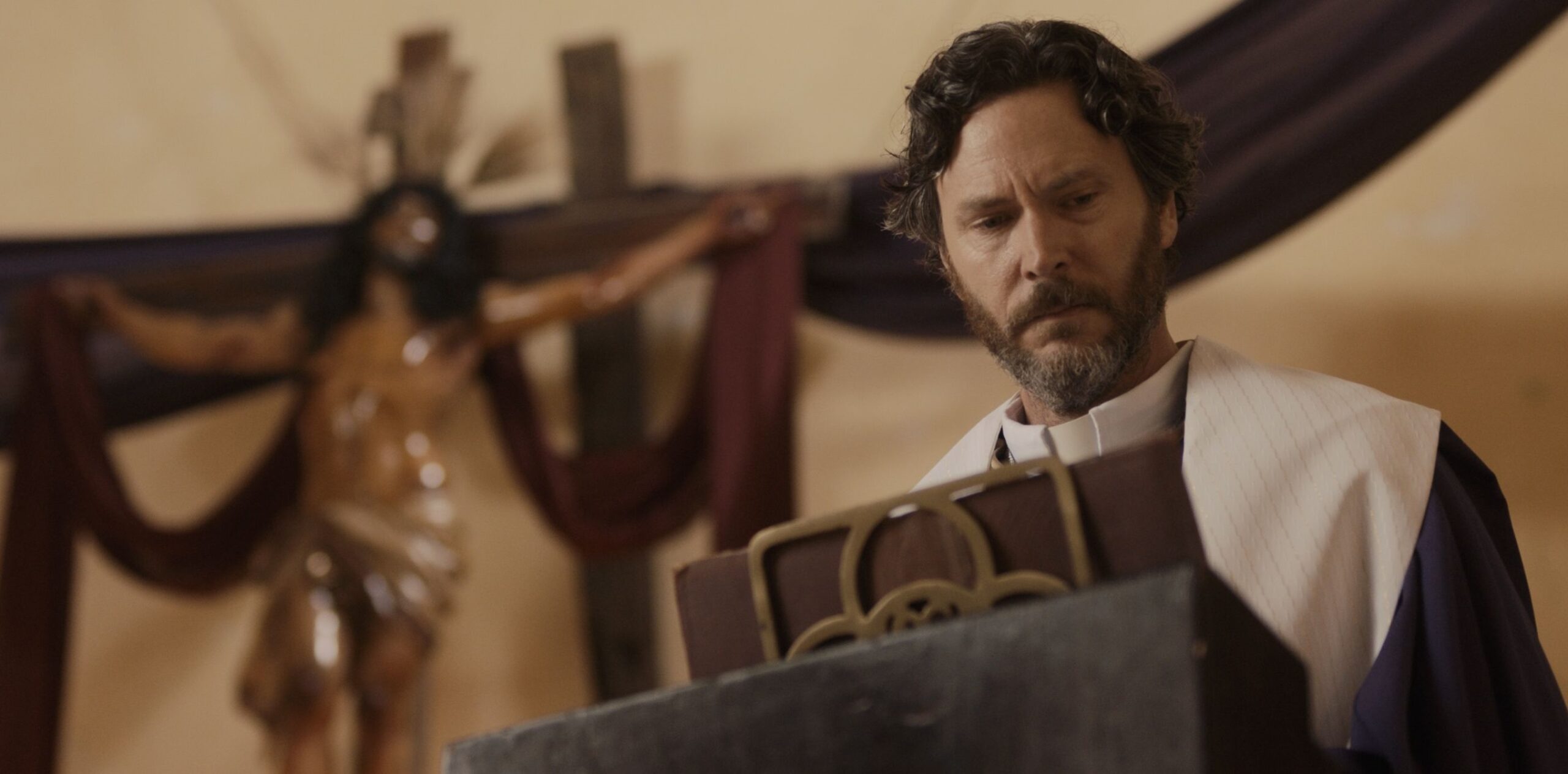
Will Father Peter be able to exorcise his own demons, let alone the demons from others?
Intriguing questions you may have, by now, are many. Exactly what is Father Peter’s satanic secret, haunting him with forbidden, lustful origins, nightmares and punishment? What is causing the horrific plague killing so many orphans under the charge of Father Peter (yes, something I’ve, until now, said nothing about)? Will Father Peter ever seek penance, confess, and receive absolution for his sins? Exactly who is the demon Father Peter is fighting (yes, all demons have names, and so does this one)? Is Father Peter even “clean” enough to fight demons, as Father Michael says one must be? And finally, what biblical consequences could all of this have in the end, for the world, and the chances of the suggested possible sequel?
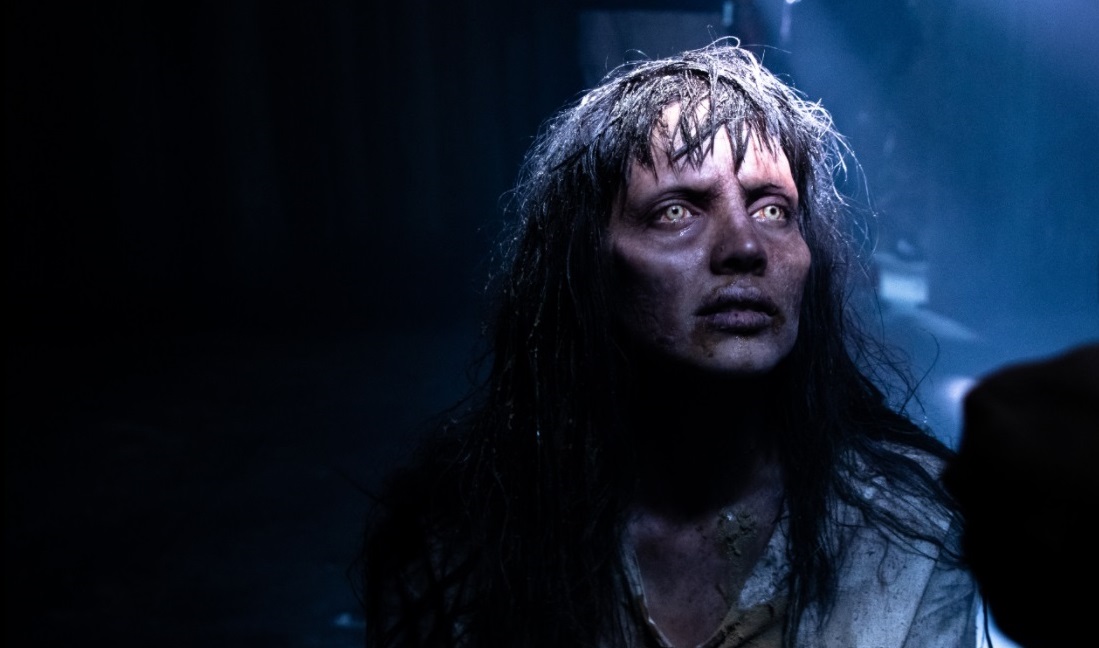
Maria Gabriella de Faría Chacón (as Esperanza) in The Exorcism of God
In the end, The Exorcism of God is more than just over-the-top, ultra-graphic, gore-filled horror about demonic possession, unholy sex and sacrilegious, shock imagery. It’s more than a cinematic collage of clichés and horror homages. It’s all that and a bag of [bloody] chips…and everything but the [butcher’s] kitchen sink. Along with familiar tropes of terror, unholy doses of originality, humanness, existential dilemmas, and archetypes are added: love, lust, guilt, devotion, selflessness, redemption, and a prelude to Armageddon (if not a cinematic precursor to a series akin to Damien: The Omen). Yes! Better yet, here, movies don’t have more of a sequel factor than this one! And since director Alejandro Hidalgo would likely do another, again, like no one else has, I’ll be in line to see it, rosary, Bible, and holy water in hand! Even if the best part is seeing Maria Gabriella de Faría in a reprise as Esperanza, along with the popcorn, I’ll be happy!

Rocket Rating – 8
Chris Rennirt (the author of this review) is a movie critic and writer in Louisville, Kentucky, as well as editor in chief at Space Jockey Reviews. He has been a judge at many film festivals, including Macabre Faire Film Festival and Crimson Screen Film Fest, and he attends horror and sci-fi conventions often. Chris’ movie reviews, articles, and interviews appear in Effective Magazine and are published regularly on Space Jockey Reviews. His mission statement (describing his goals as a movie critic and philosophy for review writing) can be found on the “Mission” page, here at SJR. For more information about Chris Rennirt (including contact details, publicity photos, and more), click here.
You may also like these!






